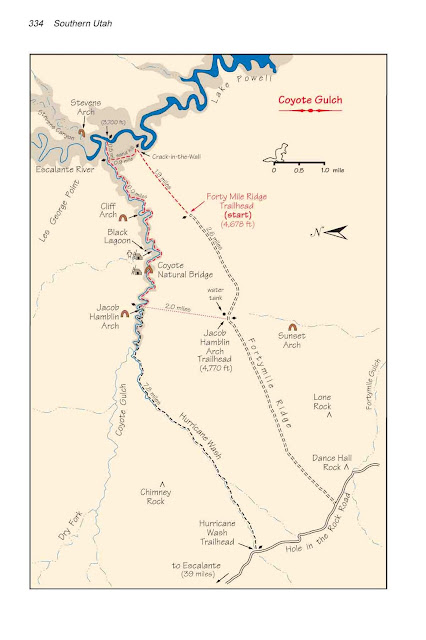Liberty Mountain employee, Lara Egbert shares with us her backpacking trip through Coyote Gulch.
I recently enjoyed a weekend in Coyote Gulch with my boyfriend, his sister, and her husband. Coyote Gulch is in the Glen Canyon National Recreation Area just outside of Escalante, UT and it's a tributary of the Escalante River.
There are many ways to get in and out of the canyon but we started at the Hurricane Wash Trailhead and ended at Forty Mile Ridge – about 18 miles altogether. We took our time and enjoyed the canyon for 2 nights. The weather couldn't have been better and our tent wasn’t even necessary. Even if it had rained, there were plenty of alcoves to use as shelter. Except for a few other small groups of hikers, we had the canyon mostly to ourselves.
The whole thing was beautiful, especially some of the canyon’s main attractions like Jacob Hamlin Arch, Cliff Arch, Coyote Natural Bridge, and some pretty cool Anasazi Tribe ruins. We even scrambled up to one set of ruins to get a better look.
We navigated ourselves through the canyon by following the wash until we got to Crack-in-the-Wall—a 15" wide slot that takes you out of the canyon. There isn't a well-defined trail throughout the whole thing, which added a little more adventure to the trip.
I came out of this trip with a solid collection of pebbles that I accumulated in my shoes. Waterproof shoes are a must in this canyon because there is no way to avoid hiking in the water. We got to test out the Vaude Terkum 55+10 backpack as well as the Olicamp XTS backpacking pot on this trip. My boyfriend and I both love the Boa adjustment system on the hipbelt of the Terkum pack and we were super impressed with how fast we could boil water with the XTS pot.
The internet is full of information about Coyote Gulch. Here are some links to checkout incase you decide to go there one day:
- http://www.wildbackpacker.com/backpacking-trails/coyote-gulch/
- http://www.utah.com/hike/coyote-gulch-trail
- http://www.backpacker.com/may_1999_destinations_utah_coyote_gulch/destinations/573
- http://www.utahcanyons.com/hiking/escalantehikes.htm
- http://en.wikipedia.org/wiki/Coyote_Gulch
_________
Receive future articles via email by subscribing with your email address in the right column.
























The basics of ultralight backpacking are for your “big three” (shelter, sleeping bag and pad, and backpack) to weigh in under 10 pounds. This provides a good goal to get your overall pack weight down. It is key to not add frivolous items into your backpack. The simplicity of ultralight backpacking also inherently provides stimulus for your imagination. best backpacking tents
ReplyDelete